Nakayama is in between Narita And Haneda International Airport
<クッキーについての同意並び欧州居住者向けプライバシーポリシー>
中山・下総・散歩道
The Nio-mon Gate (The Deva Gate) In Nakayama Hokekyo-ji
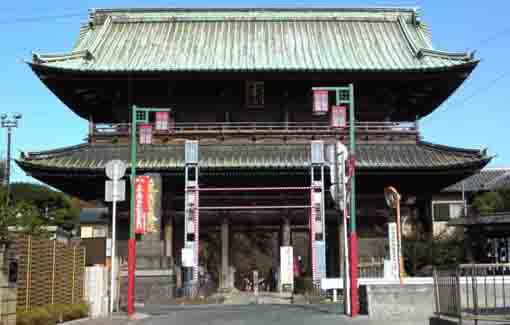
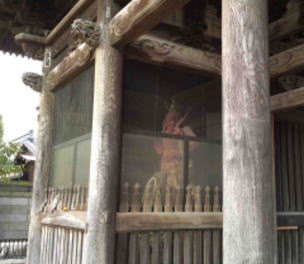
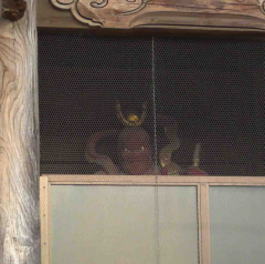
The Niomon Gate (The Deva Gate ) In Nakayama Hokekyo-ji
The Niomon Gate of Nakayama Hokekyoji Temple could be seen from JR Shimousa Nakayama Station, passing through Keisei Nakayama Station and the Soumon Gate, the giant red gate appears on the top of the slope under the sky. The Niomon gate is also called 'Akamon (the red gate)' and 'Sanmon (the triple or temple's gate). A hundred years ago, the gate could be seen from the northern part of Gyotoku area as there were no tall buildings. There are no records when this gate was built but it could be there in Edo period as it was fixed in late Edo period and it was drawn in Edo Meisho Zue a guide book published in late Edo period. The framed letters 'Sho-Chuzan' on the center of the gate was written by the famous artist in early Edo Period, Koetsu Honami. It is a cultural property designated by Ichikawa city.Behind the Niomon gate, there are many cherry trees planted lined along the approach road, and thousands of visitors come to see the cherry blossoms in spring. Why don't you visit it?
Koetsu Honami And The Framed Letters On The Gate
Koetsu Honami(1558-1637)
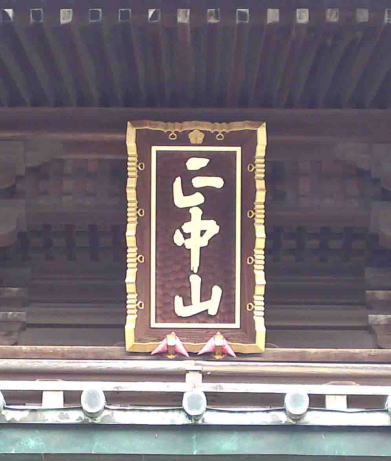
Koetsu Honami was an well-talented artist lived in Kyoto from Azuchi-Momoyama to Edo Period.
Koetsu was born in a branch familly of the distinguished sword appraiser of Honami Family. He is the first son of Koji Honami. His popular name is jirosaburo, later he was named Koetsu, and his pseudonym was Jitokusai, Tokuyusai and Taikyoan
He worke on his family business of sharpening and appraising swords, and he also had some deep knowledge and distinguished skills of the calligraphy, the ceramic art, the gold sprinkled lacquer ware and the tea ceremony. He created the his own school to teach the calligraphy, so he wrote a lot of tankas on the writing paper which Sotatsu Tawaraya and some artists had painted on, so they took the symphony in color. Therefore he was entitled 'Kanei-no-sanhitsu' (the great calligrapher in Kanei period ) along with Tadanobu Konoe and Akinori Shokado. 'Kingindeishitaesikishi' possessed in Yamatobunkakan in Nara city is famous. Two ceramic tea bowls 'Fujisan' and 'Amekumo' were the masterpieces of his works, and they are the National Treasures. On the gold sprinkled lacquer ware, he adopted the classics a lot, he used leads, tin and blue shells on 'Funabashi-makie-suzuri-bako' (the national treasure in Tokyo Metropolitan Museum). He created his school on the ceramic arts called 'Koetsu-rakuyaki' and japan arts called 'Koetsu-makie'. And he published 'Sagabon-Isemonogatari' printed by magnificent kana letters with Soan Sumikura. He learned 'the tea ceremony' by Oribe Furuta, then he was devoted to Jou Takeno's school.
Koetsu was given the land in Takagamine in north Kyoto in 1615 by Ieyashu Tokugawa, the first Shogun of Edo Shogunate, then he created the art village there with his family and his followers together.
The Cherry Blossoms at the Niomon Gate in Nakayama Hokekyoji
In spring, thousands of visitors pass through the gate and enjoy seeing the cherry blossome.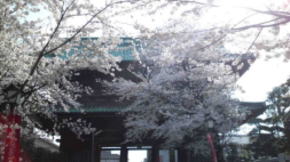
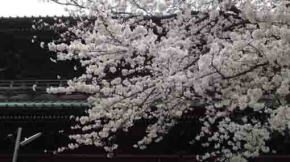
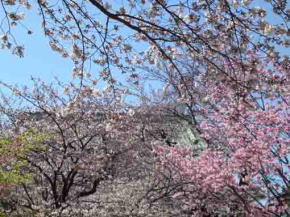
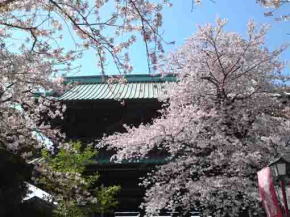
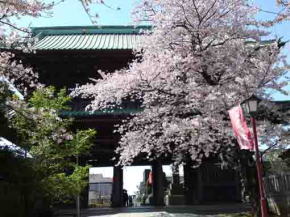
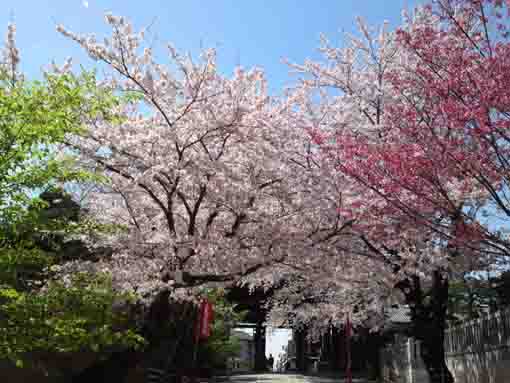
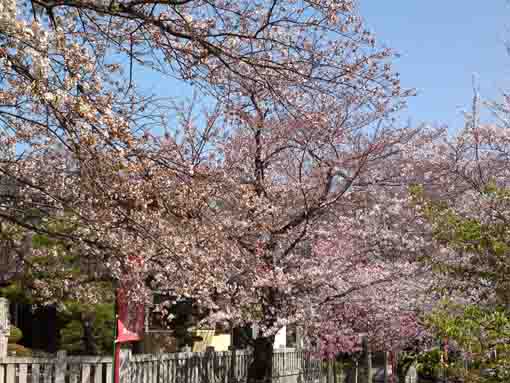
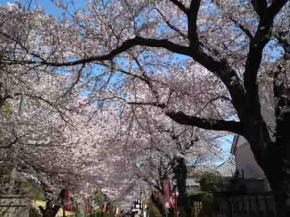
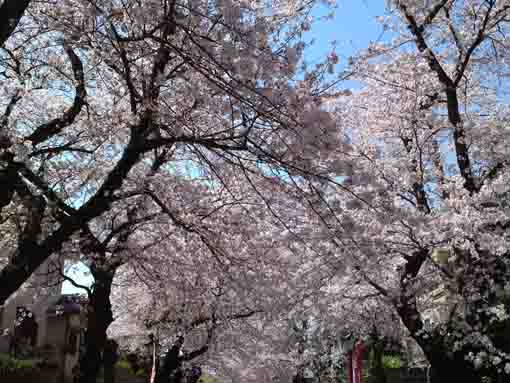
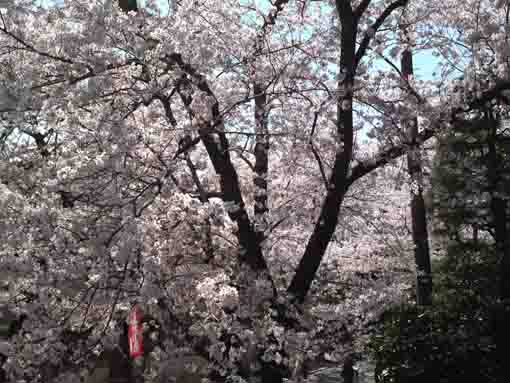
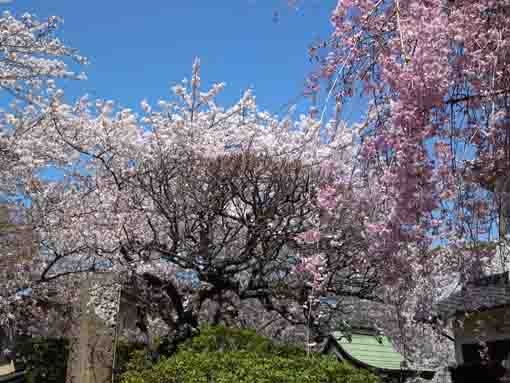
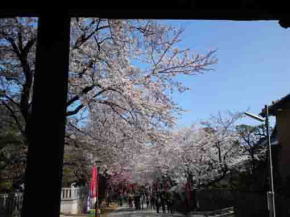
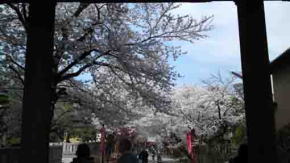
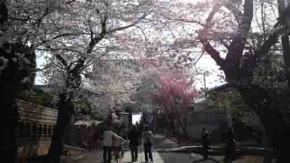
引用・抜粋および参考
正中山法華経寺誌
日蓮宗各本山名所図会
江戸名所図会6 ちくま学芸文庫
ブリタニカ国際大百科事典
デジタル大辞林
クロニック戦国全史
The Access to The Nio-mon Gate In Nakayama Hokekyoji
The Nio-mon Gate (The Deva Gate) In Nakayama Hokekyoji Temple
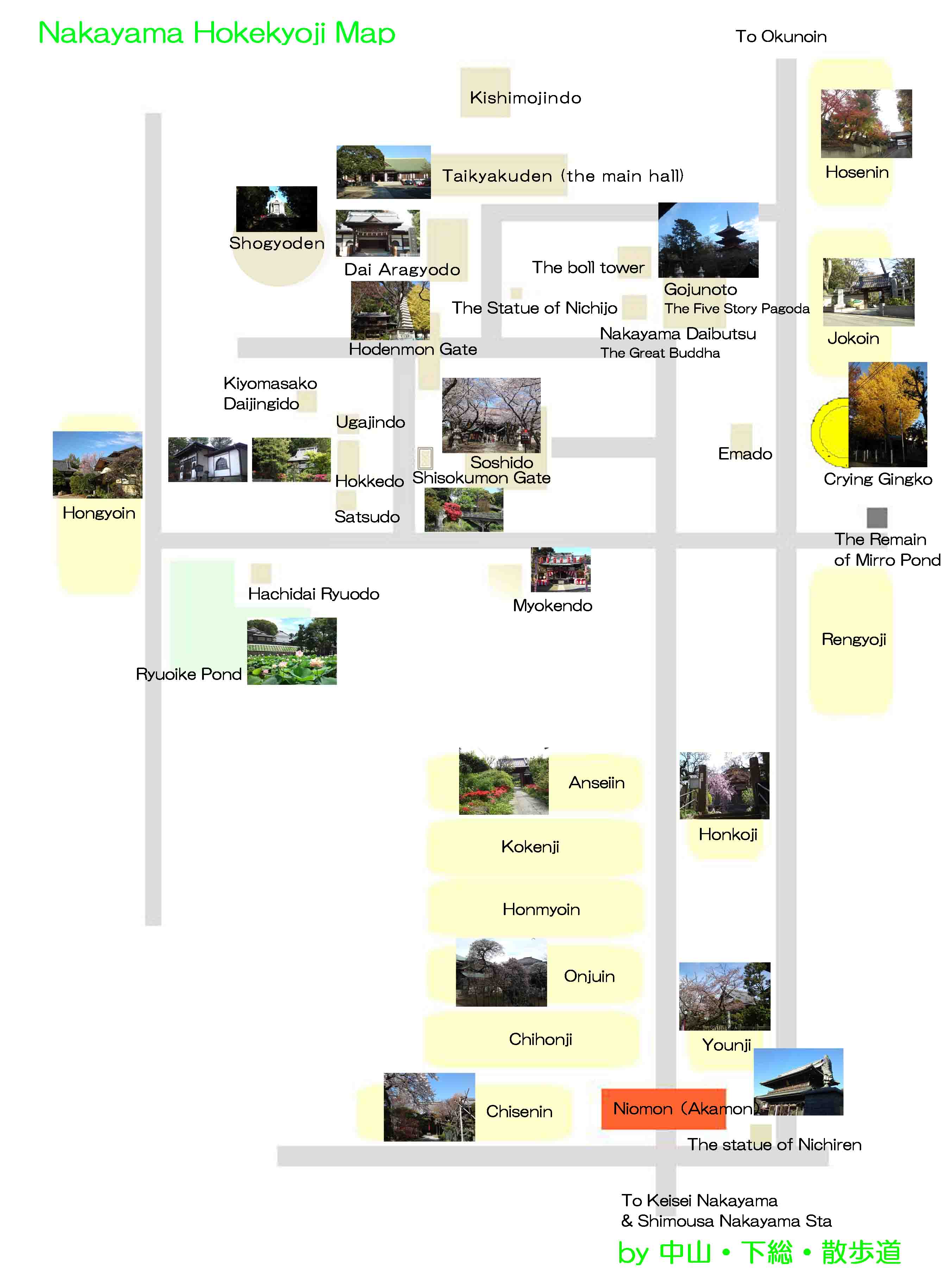
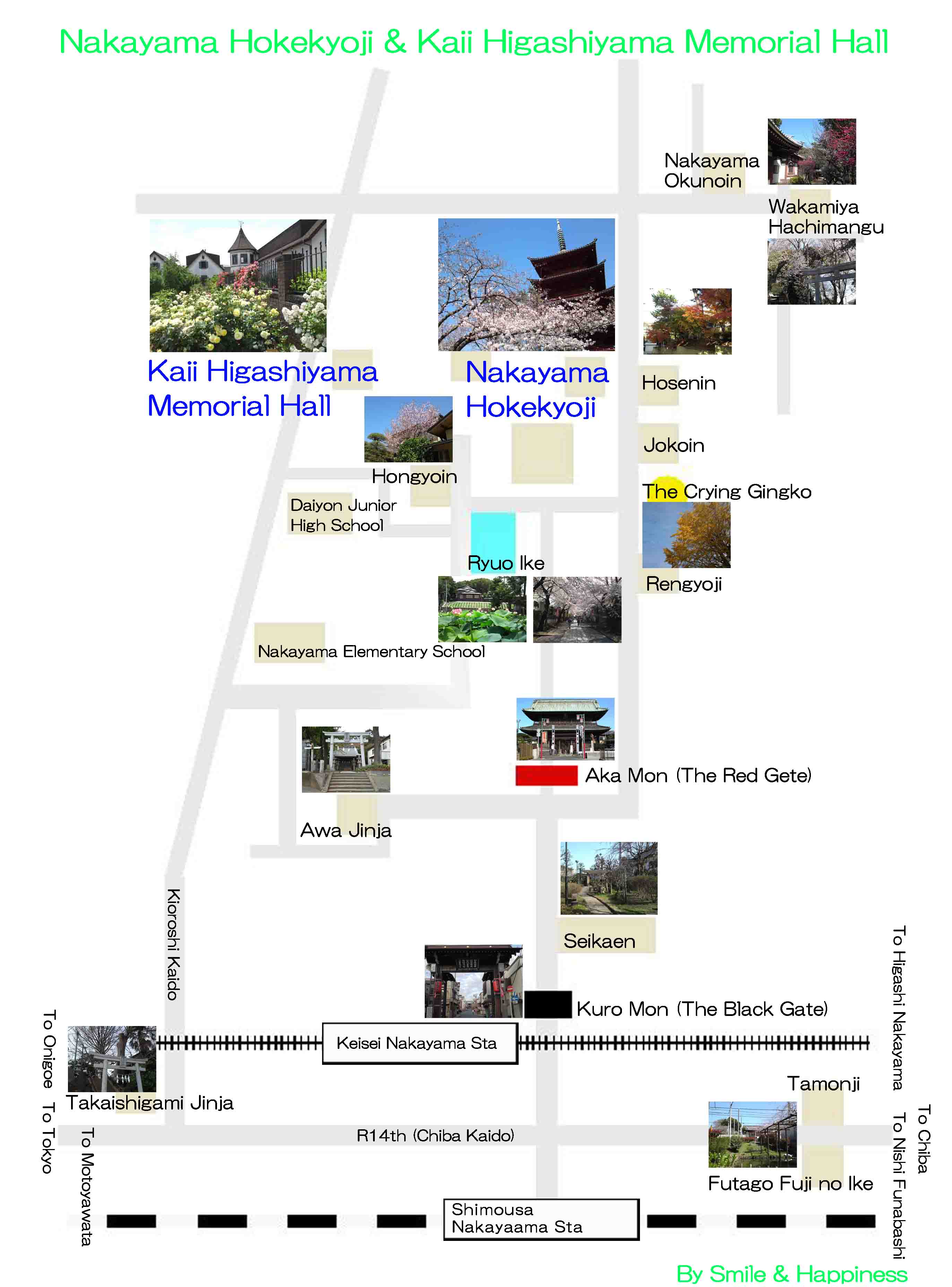
The map near Hokekyoji and Kaii Higashiyama Memorial Hall
PDF of the map near Hokekyoji and Kaii Higashiyama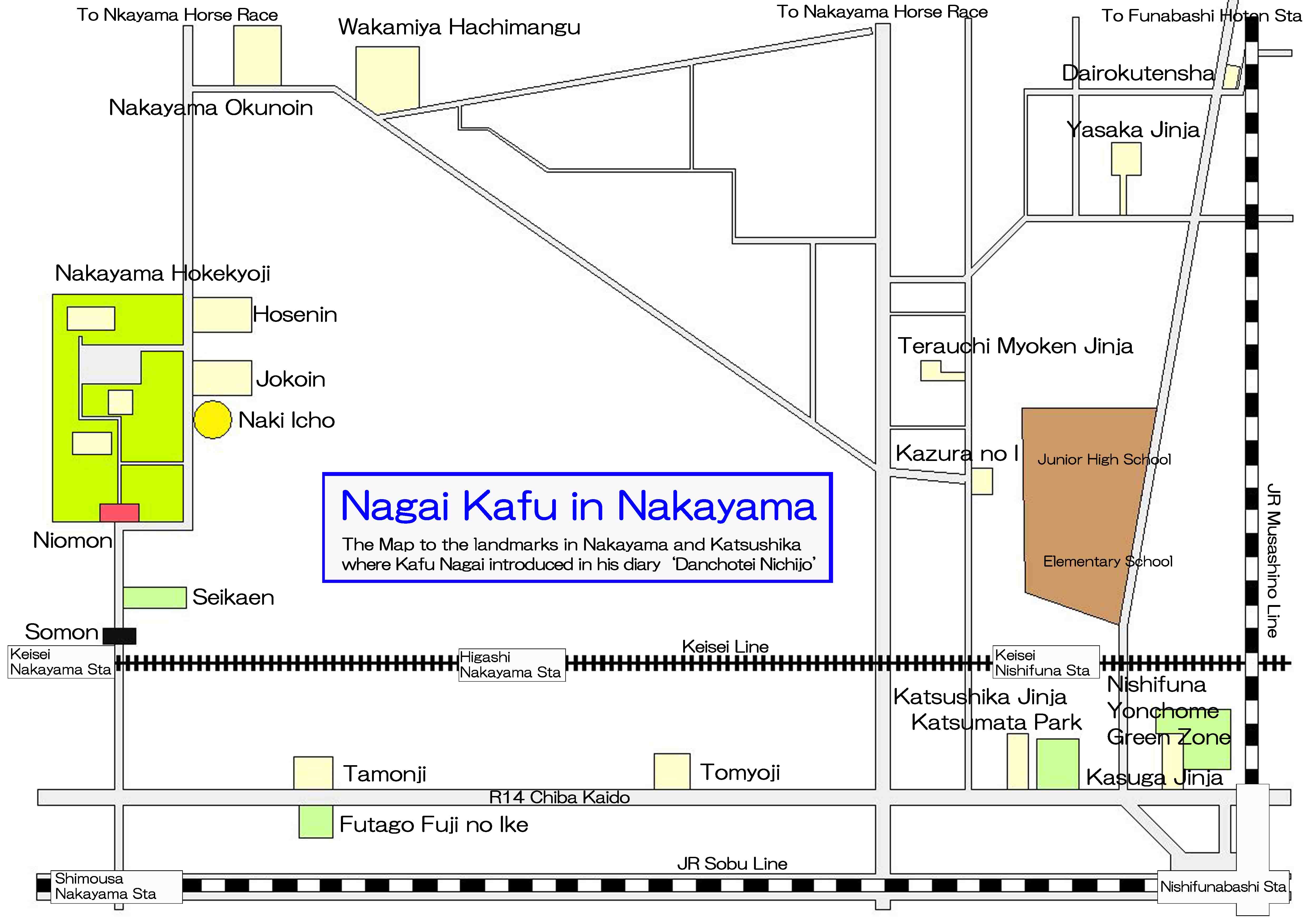
The map to the landmarks where Kafu Nagai introduced in his book
PDF of the map of the noted spots where Kafu Nagai visited- Yonsokumon Gate in Nakayama Hokekyouji Temple has great accessibilities from both Narita and Haneda International Airport.
- From Narita International Airport, take Keisei-line and get off Keisei-Nakayama Sta, take minimally 40 minutes from Narita Airport.. And also take JR Sobu-express line, transfer the line at Funabashi to Sobu-Local line, get off Shimousa-Nakayama Sta.
- From Haneda International Airport, take Keikyu-line bound to Narita, and get off Keisei-Nakayama Sta.
- From Tokyo Sta, take Sobu-Express line bound to Chiba or Narita, transfer the line to Sobu-Local line bound to Chiba, Tsudanuma, or Nishi-Funabashi at Ichikawa Sta, get off Shimousa-Nakayama Sta.
- From Akihabara Sta, take Sobu line bound to Chiba, get off Shimousa-Nakayama Sta.
- Take 2 minute walk from Keisei-Nakayama Sta, and take 5 minutes walk from Shimousa-Nakayama Sta.
- 2-10-1 Nakayama, Ichikawa-shi, Chiba-pref, Japan
The Landmarks in Nakayama Hokekyouji Temple
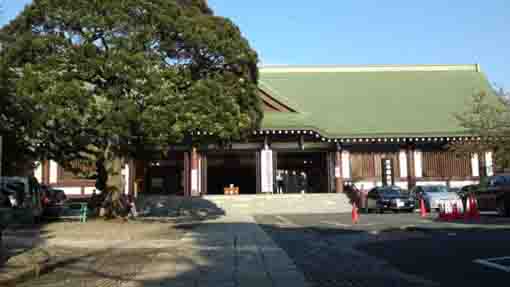
Honin(Taikyakuden)・Kishibojindo(Sonshindo)
Takikyakuden is the main hall of Hokekyoji and it has the business office and Kishibojindo Hall dedicated to the goddess of children on the end of the long corrido of the main hall.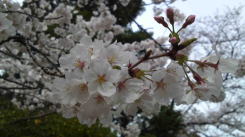
The Four Seasons In Hokekyoji
In spring, there is millions of cherry blossoms in Hokekyoji and in summer, lotus blooms on ryuo-ike pond. In fall, there are beautiful colored leaves. Every season, visitors could enjoy seeing the sights.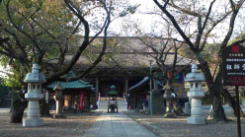
Soshido(Daido), the nationally important cultural property
It is characterized the twin hip-and-gable roof structure (hiyoku-irimoya-style), and hengaku written by Koetsu Honami hangs in front.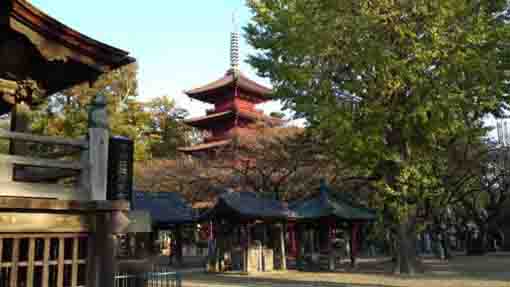
Goju-no-to (the five-story pagoda) , the nationally important cultural property
It was built in early Edo period (1622) by request of Koshitsu Honami supported by Maeda Family in Kaga.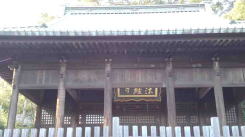
Hokke-do(the nationally important cultural property)
It was built in Kamakura period.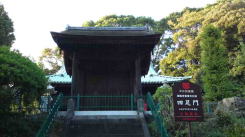
Yon-soku-mon (the nationally important cultural property)
It was moved from Aizen-dou in Kamakura 700 years ago.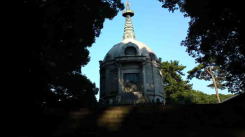
Shougyoden (the treasure hall)
It was designed by the famous architect Chuta Ito, it stores many scripts written by the Founder Nichiren.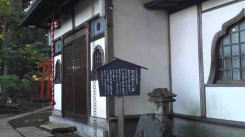
Shogan-jyoujyu-kigan-do (kiyomasa-kou-dai-zingi-do)
It enshrines Kiyomasa Kato, one of the most famous daimyo in Sengoku period.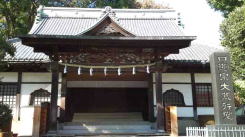
Aragyodo Hall (the hall where Buddhiist priests practice for 100 days in winter severly)
From Nov 1 to Feb 10, hundreds of Buddhist priests practice severly every year.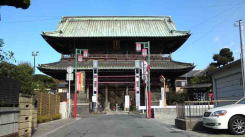
The Nio-mon Gate (The Deva Gate)
The henguku hunged in front of the gate was written by Koetsu Honami, famous artist in Momoyama Period.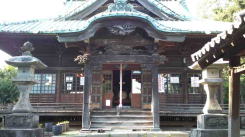
Setsu-do
It was built for worshipping Jurasetsunyo, Kishibozin, Daikokusama.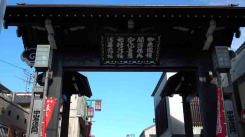
Black Gate(a tangible cultural asset by Ichikawa City)
It is also called Sou-mon (the main gate).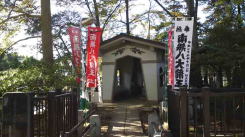
Hachidai-ryuo-do
The founder Nichiren built the small shrine to dedicate the dragon god to pray for rain.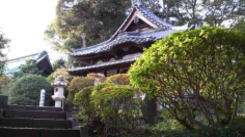
Ugazin-do
It enshrins Ugazin who is the guardian deity of Hokekyou-ji Temple.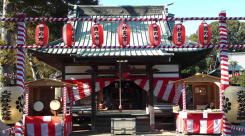
Myouken-do
It dedicates Hokushin Myouken Star that the Chiba Family deeply believed in, Hokekyoji traditionally succeeds. In November, Tori-no-ich is held in the site to dedicate the star.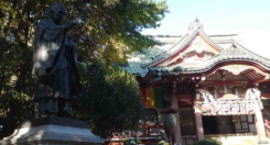
Oku-no-in (the first place where Nichren had preached at)
The founder Nichiren preached first time at the Toki's castle called Wkakamiya Yakata. And Toki built a temple 'Hokkeji', it is the origin of Oku no In.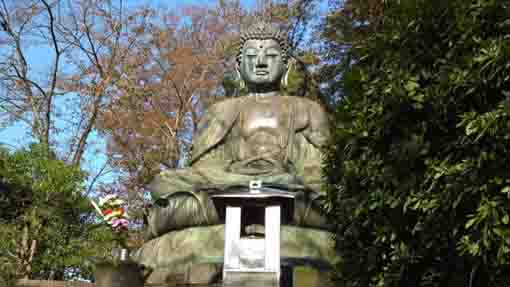
The Great Buddha(The Seated Statue of Shaka Nyorai)
It was built in 1719 by famous caster Ota Suruga-no-kami in Kanda. It is the bigest great Buddha in Chiba prefecture.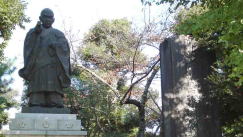
The statue of Nichijo and Naki-Icho
Nichijo was the first abbot of Nakayama Hokekyoji Temple and Naki Icho is a gingko tree having a sad legend.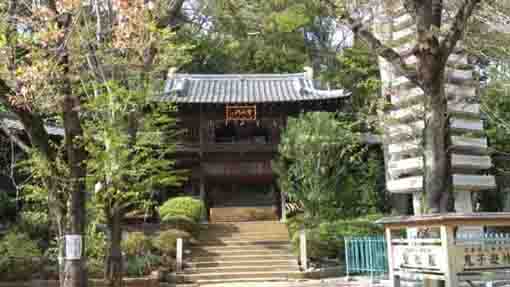
Kagami-ike-ato (the remain of the pond like a mirror), Emado hall, Hoden-mon gate, Ryuenkyo bridge
There are some other landmarks in Nakayama Hokekyoji Temple.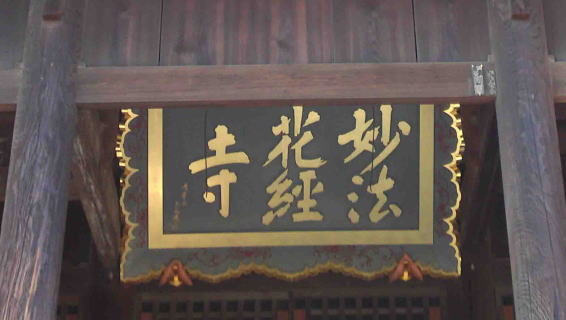
The artists, poets and writers related to Hokekyoji Temple
Koetsu Honami specially remained his calligraphy in Hokekyo-ji Temple, and Shiki Masaoka, Kafu Nagai discribed it well.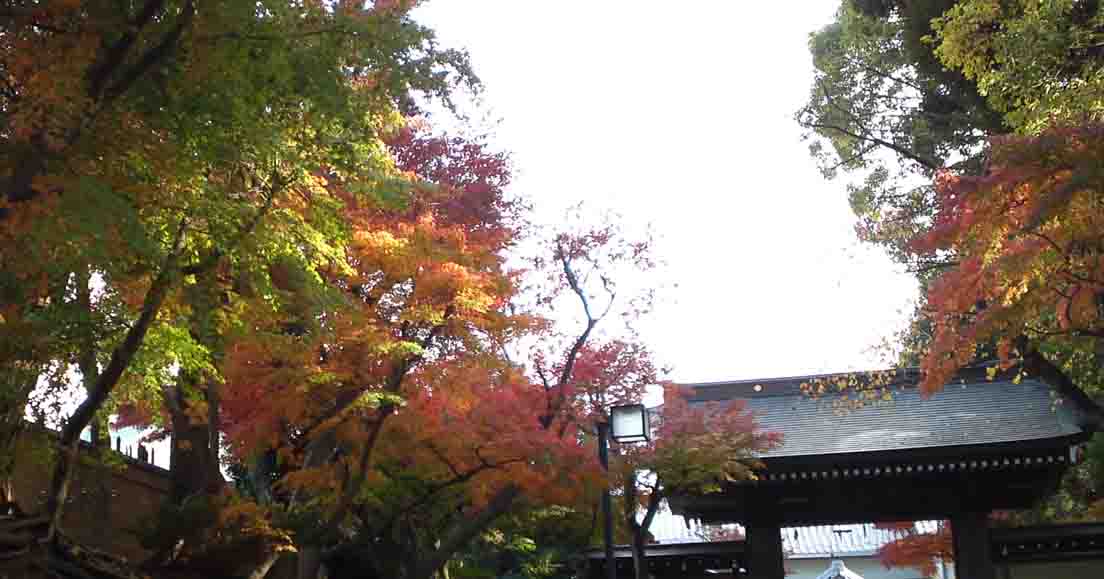
The Tacchu Temples and the Branch Temples in and around Nakayama Hokekyoji Temple
Some tacchue temples are introduced in this page.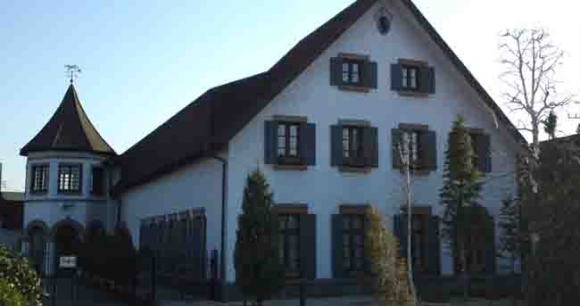
A Walk on the the area around Nakayama Hokekyoji Temple
There are some noted spots, Kaii Higashiyama Memorial Hall and so on, near Hokekyoji.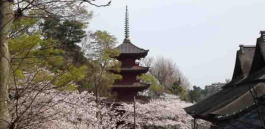
The Popular Viewing Sakura Spot / Nakayama Hokekyoji Temple
Cherry blossoms in Hokekyoji are amazingly wonderful.- 広告 Advertisement -
